Shelly and Cam continue to discuss the concept of context as it relates to coaching and to the lived experience with ADHD. We are wired for context and the compelling narratives that can drive behaviors good and bad. Today we delve into how being wired for context is not so helpful as Shelly shares a concept that one of her clients termed ‘contextual mad-libbing’ – where one inserts their own narrative and meaning into an incomplete context like a short text message or a rushed meeting in the hall where key bits of data are missing.
All brains add and subtract meaning to make what we are perceiving make sense. A brain cannot process every piece of information it senses, so it skips and subtracts and adds meaning. Those of us with ADHD can be susceptible to contextual mad-libs where we quickly add our own meaning when we don’t have the entire story. The practice of ongoing contextual mad-libbing can have the individual expend tremendous energy and precious bandwidth on something that may not even be relevant. Shelly shares how she worked with her client to break through the Third Barrier and maximize the learning from a past negative work experience to inform a new promising work experience. This coaching work helps to address ADHD issues like prospective memory, developing useful hindsight and forethought. Cam and Shelly leave listeners with a few exercises to bring the Keen Observer to this mad-lib phenomenon.
Episode links + resources:
For more of the Translating ADHD podcast:
- Episode Transcripts: visit TranslatingADHD.com and click on the episode
- Follow us on Twitter: @TranslatingADHD
- Visit the Website: TranslatingADHD.com
Episode Transcript:
Shelly: Hi, I’m Shelly.
Cam: And I’m Cam.
Shelly: And this is translating ADHD. Before we kick off this week’s episode, we have an announcement about our next group coaching course. The next course will be on agency. Something that we talk about frequently on this show agency is having a sense of control and choice in your. Whether you’ve taken one of our previous courses or not, each of these courses is designed to stand alone, but they also work well in conjunction with one another.
So if you’re just jumping in for the first time, and you’re not sure whether or not you can jump into this course. Yes you can. This course will begin on Wednesday, January 19th at 8:30 PM. Eastern time, you can find more information and apply to join by visiting the website, translating adhd.com and clicking on the group coaching link. We hope to see you there. So this week we’re going to continue our conversation on context. Cam, do you want to say more about what we’re delving into today? Around context?
Cam: This is one of these themes where there’s so much here to look at. And so you and I were talking about this beforehand and coming up with all kinds of different scenarios where we see contexts not helping us out. So eventually we’re going to get to where context can be something very helpful, a stress. But we want to start with the common pitfalls and we thought we might start with general overview, but then we lit upon and something that resonated out in a social media world around this idea of contextual, mad lips. We’re going to dive in right there. And this is something that you shared with the world.
So why don’t you say more about this, Shelly? What do you mean by contextual Madlibs?
Shelly: Good question cam. And before I answer it, I’d like to share a little bit about the clients who coined that term. So full credit to my clients for coming up with contextual Madlibs and it happened during a coaching session. So I’ve been working with this client for a while and his journey during our time coaching.
Look, something like this. When he first arrived to coaching, he had been let go from a full-time position. One that was pretty difficult on him professionally and personally, he was let go without warning. And that series of events really created a lot of limiting beliefs for my client. We have done a lot of distinguishing work around that scenario, parsing out what was his stuff and what wasn’t his stuff.
Because as it turns out, there’s a whole lot in that scenario that wasn’t his stuff, but nonetheless, he was let go without warning and told you’re not good at this. You should find a new line of work. So at the point, my client and I start working together, he has decided to find a new line of work. And he’s got a solo project that he’s working on launching.
And for several months, we’re digging into this solo project and we’re doing our other work. He’s learning about his add, he’s learning about his limiting beliefs. And then one day this opportunity comes his way. Someone that he had previously worked with, reached out to him to recruit him for a position in the same line of work that he thought he wanted to leave and really recruited him.
And this position is with a company who at least as far as we know so far really seems to walk the walk in terms of embracing divergent. Letting their employees work within their strengths and seeing the value of each person on the team, all things that he did not have before. And so he decided to take this role, which was a pretty big switch from what he had decided previously.
And funnily enough, in the coaching session about it, he wasn’t going to take that job. And then in the week between. He had some further realizations decided to step into this role. So here we are, he’s in this new role. And again, all signs point to this being a good working environment, a place where he can be open about his needs, where he can have agency and where they see his value, they see what he is able to do, and they’re willing to let him work, how he works best.
So a couple of weeks ago, he arrives to a coaching session and he’s talking about a post that he put in this company is project management software highlighting a plan for a project that he was taking on after he posted that a colleague responded with a comment and she was checking in on. Are you considering how your plan might affect or have implications for my area of work?
My client immediately went into what I like to call the defensive crouch. And we’ve talked about the defensive crouch before. what does she think? I didn’t think about this. Does she think, I don’t know what I’m doing is this some kind of strike against me? Is this where the other shoe is gonna drop, starting with you see how it kind of builds even starting with negative thoughts related to the scenario itself and then ballooning outwards to, is this some sort of secret strike against me?
Are they looking to, let me go.
Cam: Or, Or here it goes again, like we’re back here again. And this place.
Shelly: And so he tracted an entire response from that defensive crouch help ever with the work that we had done in coaching, he was able to pause and disrupt before sending that reply and he realized maybe defensiveness is not called for here. So he came to the coaching session, curious about.
Why did I react the way that I reacted? What happened here, that I immediately went to that defensive crouch and almost sent a reply from that place. When, in hindsight, upon reflection that was not necessary. And we found a couple of interesting things. Number one, text-based communication and ADHD can be challenging.
Think about all of the contexts that’s missing in a text-based conversation. A there’s no opportunity to jump in and clarify if something is unclear, there’s no tone or body language. And so there’s a lot missing in terms of where is this coming from? And so my client then started applying some old context.
He realized that it, his previous role, he was always on the defensive. He was not given agency. He was not valued for his expertise. He was not given the resources he needed to do his job well. And he was held to really excrutiatingly high expectations. So, So much of his job in that previous role was being defensive.
Defending taking time to work on something, defending his approaches, defending his need for resources or support in order to be able to create the outcomes that were being asked for. So this message brought that in because he read between the lines and started adding all of this. They don’t trust me.
They don’t value me. They’re not going to give me what I need. So I have to go on the defensive here. And that’s where he went. And that is contextual Netflix.
Cam: I love that, I feel like we could almost do, we could launch a whole nother podcast just on this topic,
Shelly: Absolutely.
Cam: because I I wanted to pause here just to check in with listening. How much of your day is characterized by something like this? And it can be really big or really small where you get a bit of information, but it’s not enough, right?
Whether it’s a messaging or a voicemail, or just a quick thing in the hallway. And it’s. what do they mean? Are they challenging me? And this breakdown in communication and what we do so famously is we will insert where we don’t have data. If something’s missing. this is, I see this with my clients.
Shelly, I’m sitting here, I’m like, I’m having my own experience. I’m like, oh boy, does this feel familiar? Right To end? Do we go positive with it? Not necessarily. It’s like, oh, that defensive crouch and all the energy and attention and bandwidth goes to that defensive crouch, which is what does it basically. It’s based on a little bit of information and we take it and we supersize it. And as you said, we insert Madlibs that really fit into our narrative, a narrative that no longer applies in this example. And that’s the power of the big signal, right? This is that emotional memory. He has such a powerful, emotional. Of that experience, that the least little I, I hate to say trigger, but just a prompt that can have him go there. And as he goes there, we were also talking about this. He goes there to that Madlib place of inserting the old narrative and what’s lost. What’s lost is his sense of where he is now. This loss of sense of self. Where did he go? It was replaced by this much more powerful signal. I think this is a lot of when people have RSD responses, that sense of rejection. It is with that powerful, emotional memory that is so front and center for us. It’s so hard to come back to those more subtle signals of who am I.
Where’s my agency. And what is another option other than this defensive crouch? The question I have here is he did something really important there in the sense. I could reply from that place. So that place it’s distinguishing it just like you distinguish it a couple of weeks ago with feeling behind, around your home stuff and that stepping back and recognizing, oh, that’s a perspective and maybe it’s not in my best interest.
So how did he. I don’t know, get to that place, to be able to notice it as a perspective and not again, incoming, where he’s really got to be in this defensive crouch.
Shelly: It’s a good question, cam. And a lot of it had to do with work that we’ve already done. We. To this point had talked extensively about his prior role. And with this decision to step back into the same field, we were paying very careful and keen attention to limiting beliefs there because ultimately when he decided to leave that field, And to launch this solo project, doing something else.
He was pretty firm in that decision. I don’t want to do this work anymore. Most workplaces will not allow me to do this work in the way that I work best. And when I’m in a situation where I am given really high expectations, And I’m not supported to do my good work in a way that can meet those expectations.
I can’t win. So I’m just going to do something else. This is not for me anymore. So when he decided to step into this role, we’ve been looking at it pretty much every week since meaning does this company walk the walk. Are you valued? Do you have agency and the answers to all of those things are yes.
Resoundingly. So we’ve had coaching sessions on how to access support, or how to advocate for certain things in his new role here. And those actions have gone well. So he’s got these new experiences that he can tether it to. And somewhere in that moment, he was able to pause long enough to realize that here I’m reacting as if I’m still in this old role.
And I am completely forgetting the new, positive context of this place that I find myself in. And guess what when we’re in the emotional brain and emotion is leading the conversation, particularly negative emotion. That tends to happen for those of us, with ADHD, we discount the positive and we play up the negative.
But upon writing the response, he took a beat and was able to distinguish I’m reacting as if this was my old role. And it’s not my old role. He was able to look at what am I assuming? Noticing that he was filling in some gaps and he was also catastrophizing a bed that fear of secret strikes against me is something my client has on board really strongly after that last experience of being let go without warning.
Cam: Did you say secret strikes against me? That’s his term?
Shelly: Oh, yeah. Yeah. He talks about the whiteboard somewhere. That is in a room that he doesn’t know about, that coworkers are keeping track. Right.
Cam: Yeah. Like, I’m listening to this and I’m really impressed with the work you’re doing with your client and the work that he’s doing here. Last week, you talked about the value of context. And as we step into relationship with our clients immediately, we are doing some 10,000 foot work with. We’re meeting them on the ground and what their challenges are, but also we’re holding this higher level view who they are, what matters to them, what are their strengths?
What are their values? And as you’re entering into this coaching engagement, Acknowledging the challenge of the last job and the taking the learning. Doing really important third barrier work there with him of how can we apply this into this new situation? And they’re immediately being tested right?
Of here’s a early test of this cryptic message to him that can put him right into that defensive crouch and that language secret strikes. Against me right there. There’s a room of people with a whiteboard and they’re drawing, you know, how do we take down this? I love it because in that there’s an absurdity of that. As we start to realize that like really are they really hatching against me? And we can construct these stories that are so compelling, but it’s more of the energy. But with that introduction of the 10,000 foot level and a reflective practice and stepping back and developing your keen observer, there’s this mode of kind of like we get in there and with a stressor, we’ll push hard.
Like I got to defend my position. I to defend myself, it’s like, whoa, is there another way? Can I pause, look back and really think about. Where am I making an assumption here? Am I making an assumption? Am I bringing something here that may not be the truth?
Shelly: Yeah, I cam, so it was in this conversation that my clients notice the contextual Madlibs. That was his language. As we noticed all of this old stuff, he was bringing forward and applying to this situation, he said, it’s like, I’m playing contextual map lips. And we both laughed because it is a little absurd.
The secret strikes a little absurd, but here in lies, the power of articulated. Of talking about our experiences with other people, because internally my client felt that secret strike story on a visceral level, and you could see it in the way he was showing up in the way he was talking about. But then getting it out and starting to examine it more within the context of reality.
And curiosity, rather than in this emotional brain where it feels so real and so true and so painful, you can start to see the absurdity, hence the contextual Madlibs, right? The whole session, the energy in our session completely shifted when he said contextual Matt lives because we both laughed. And then we were able to take a beat and step back.
And be in curiosity, and for this client, he realized there was more work to do around letting go of this old stuff. Even though we had talked about it, almost exhaustively with every client, there are certain. Things that become recurring themes in the coaching work. Those really big signals that are sticky and that we have to go back to more than once.
And for this client, this is exactly what that was. And so we came back to it the next week and looked at it again and he got to a new place. And that new place is two things. Number one, the way that I was treated, I can’t believe that my supervisor told me I should change lines of work. Just point blank.
I would never say that to someone, particularly if I haven’t even offered them supports first. That’s not my baggage to pick up. I’ve been carrying that baggage around. That’s not my baggage. That’s that person’s baggage. I got enough baggage of my own. I don’t need to pick up and carry this person’s baggage to, I know that the way that I was treated at the end of that relationship was not right.
And I don’t have to carry that with me anymore. And the second piece was this job stole from me. It’s still my competence. It’s still my self image and it’s still my love and passion for this work that I am talented at doing.
And so we started to talk about. This rebuilding process, like a brick wall. Interestingly enough, he, at first he said concrete. Here’s like, somebody messed up the concrete before it dried. And I was like once concrete dries, it is what it is. Is that how you see yourself? He was like, no, maybe concrete.
Isn’t quite right. It’s like a brick wall. It’s like gradually rebuilding a brick. I’m putting those bricks back into place that this scenario knocked down. So my self-confidence my self image. My love for this work, I’m still doing the work of putting those bricks back into place. But I now see that as the work and I don’t have to carry all of the baggage that isn’t mine to carry forward in this work.
So it was a really cool shift around a topic that we’d been on for a long time. Do you hear in that how my client is taking his power back, which was awesome by the way.
Cam: So awesome. And again, I want to point to the third barrier. Right barrier. Number three, here is the barrier to new learning. I was going to ask the question of around costs and that’s he got to it with the cost of this old job stole from. How much energy, how much it took away from him. The other thing is, contextual, mad living takes effort and energy.
There’s so much effort and energy that goes into that. Right. Expanding on something that really isn’t there. That’s not necessary. If you could take that back and turn it into again, creating and building the wall. And building positive connections in this new environment. And so as we finish up today, listeners, you know what we’re going to ask you it’s to start with.
Okay. Is contextual mad libbing, something that you’re experiencing and not to beat yourselves up, or I got to stop that. Bring the keen observer here. Bring the keen observer. Just to notice how much energy are you bringing to this because, and why do we do this contextual, mad living? We do it because it provides a bump, right?
There’s drama here and where there’s drama. There’s a tension in our brains, like where we want to create a tension. We’re creating a tension around something that’s not. Or no longer relevant. We can hold on to things for so long, being able to, okay, this is not me anymore. This is no longer my experience. So noticing the mad living and just taking a step back like Shelly did with her client to step back. Is there more information that I need here is there. Someone’s giving me a bit of information that I don’t have enough data from that. Can I go seek out clarity? That was one of my big ones. And one of the skills that I’ve developed was okay, before you take that big idea generator and catastrophize around that cryptic message. Yeah, they’re busy. I’m busy. It’s that’s how messaging happens in the sense of it’s incomplete. It’s like, oh, can I get a little bit more information here? So I understand what you’re asking and what you’re asking of me. What’s my role. It might be that it has nothing to do with me that you know what, that’s not in my swim lane. And I don’t have to own that, but start with that keen observer around this whole idea of contextual math. But I mean, I love that love that expression. I love listening to the work you did with this client here really fast.
Shelly: Sorry brain. Thanks, cam. Really. Fun client to work with. This is not fun stuff, but it’s so fun to create shifts around this stuff. It’s one of the reasons I love what I do and you and I are noticing more and more that these are the types of shifts that create change with ADHD. This is such a big part of the work that we do.
Is going with our clients to their valley place in a safe way, and really examining what’s going on there. Something that we don’t naturally do, otherwise, something that we have to learn how to do. It was a long road for this client to get from. I believe this about myself and therefore I do not want to work in this field anymore.
Too. I know my value. I know I’m good at what I do when I am empowered to do good work and the company who didn’t think so stole from me, what a shit. So listeners, as we said at the start of the episode, our next group coaching begins on January 19th. Visit the website, translating adhd.com and click on the group coaching tab for more information there, if you like what we’re doing here, and you want to support the show, otherwise a couple of big ways you can help us out.
The first is don’t keep us a secret sharing. On social sheriffs at work, share us with others. You know, who have ADHD. Number two is to subscribe, leave a review or leave a rating wherever you listen. This helps other people find our show and find. You can become a patron by visiting the website, translating adhd.com, clicking on the Patrion link in the upper right-hand corner.
And for $5 a month, not only are you helping us cover the costs of running the show and bringing this content to you each week, you also gain access to our discord community, where our listeners are working together to do their own understand, own and translate. So until next week, I’m Shelly
Cam: And I’m Cam.
Shelly: and this was translating ADHD. Thanks for listening.

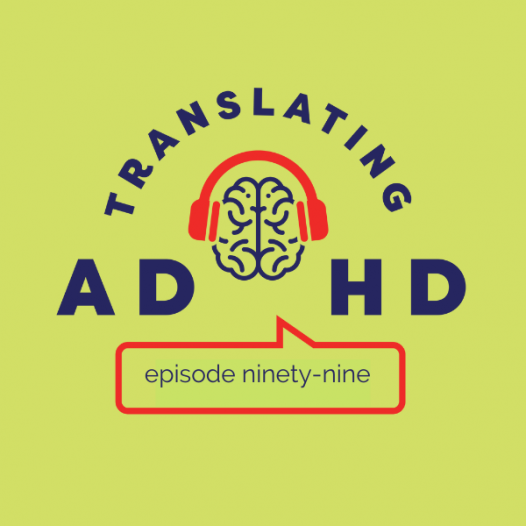
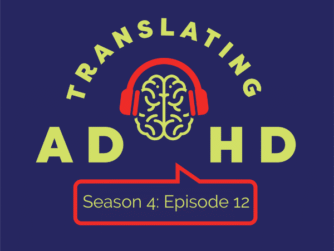

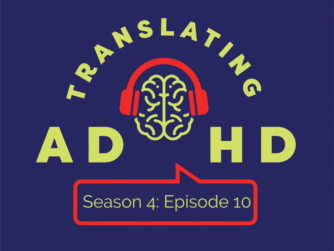
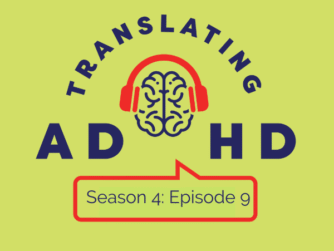
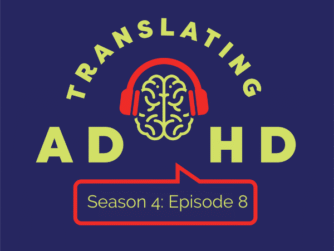
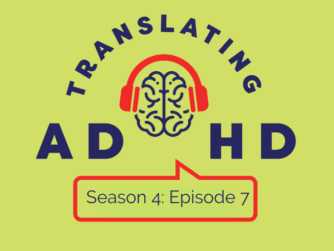
This was so great, thank you. For me it had very strong parallels for the line of work I got out of recently, which is the academic job hunt – not a particular academic job, but rather a decade-plus of temporary and part-time academic work while hunting (and not finding) tenure-track work in music and art. I finally stopped letting that situation abuse me last year, around the same time I got diagnosed with ADHD at the age of 47 – not at all a coincidence. Now, about a year later, I just got hired to some contract work at a university… but presenting my own artwork, zero tenure-track hoops, no CV required, and no waiting months to be ignored by a school’s job committee! Much friendlier to my way of working and thinking.